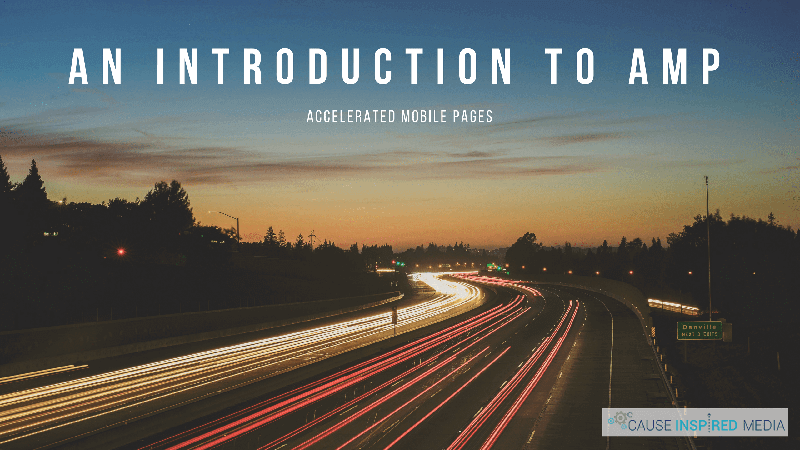What Is Google AMP?
Accelerated Mobile Pages (AMP) is a featured platform that decreases the loading time for mobile pages. Google’s main goal with AMP is to improve the internet for all users by enabling the creation of websites, as well as advertisements that load quickly, are aesthetically pleasing, and perform highly across all devices and distribution platforms. Google’s AMP project was launched in October, 2015, and was rivaled a few months later by Facebook’s Instant Articles (or Facebook Canvas). It was originally intended for content creators and publishers, but it can also be effectively utilized by eCommerce sites.
“AMP provides a simplified framework for mobile pages that is not only responsive and faster, but removes friction between original content, on-site advertising, and people actually using the site. It is able to do this through consistent organization, limiting some functionality, and distributing content throughout a network.” Says Sean Kerr, Co-Founder and COO of Cause Inspired Media.
Both AMP and Facebook’s Instant Articles (FIA) provide a swift and clean mobile experience, yet Google AMP is designed to be efficient in the open web, not just apps. The difference between AMP and FIA is not only where the platforms operate, but also in regards to loading speed. It is important to note that Facebook Instant Articles load faster than Google AMP, although as many as 3 times more AMP articles are viewed than FIA articles. If you’d like to learn more a bout FIA, visit our previous blog, “Enhancing Your Facebook Ads Using New Canvas Format.”
A Chartbeat report indicated the average mobile web article takes around 5 seconds to load. In that same experiment, Accelerated Mobile Pages averaged 1.4 seconds. This is done by AMP Javascript prioritizing certain website elements over others. Third party elements and anything below the fold are loaded subsequent to the main content appearing on the screen. Here are a few reasons why Google AMP is an asset to nonprofits looking to guide traffic to their website:

- Google AMP uses ten times less data than normal articles. If your site contains a fair amount of media, the platform allows your site to perform quicker regardless of what exists on your webpage. This can lower bounce rates, and encourage conversions (people performing a desired action on your website, like donating, filling out a sign up or volunteer form, etc.).
- The same Chartbeat report mentioned above states that AMP pages were found to improve 35% on engagement time over the standard mobile pages.
- Hitwise recently shared that news & media searches are initiated 64% of the time on mobile devices instead of desktop computers. Nonprofits that utilize current events, news, or blogs for awareness campaigns will be able to get their messages out to large audiences quickly using AMP articles, and can expect their engagement to increase.
What’s new with AMP?
Google is currently considering whether “Google Instant” is a more suitable name than AMP. Many feel that changing the name could simplify the concept, and provide a more user friendly impression. Where Google AMP features a grey lightning bolt next to their articles (as shown in the picture to the right), Google Instant has a bright blue lightning bolt that contracts sharply from the header text.
The new logo color would stand out and aims to reassure the internet user that whatever they click on will load quickly, and not lag. Catering to mobile is a necessity at this point, so the re-branding may give users more inclination to engage in ads in the Google Instant format.
If your nonprofit seeks to share unique or competitive content, Google AMP is an effective way to get your article to the top of the search results page. If you have any questions about Google AMP, Facebook Instant Articles, or digital marketing in general, contact us!
By: Charlie Dunne, Digital Analyst















